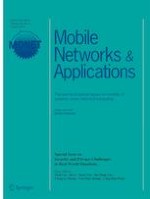01.05.2021
Evaluating the Performance of Full-Duplex Energy Harvesting Vehicle-to-Vehicle Communication System over Double Rayleigh Fading Channels
Erschienen in: Mobile Networks and Applications | Ausgabe 4/2021
EinloggenAktivieren Sie unsere intelligente Suche, um passende Fachinhalte oder Patente zu finden.
Wählen Sie Textabschnitte aus um mit Künstlicher Intelligenz passenden Patente zu finden. powered by
Markieren Sie Textabschnitte, um KI-gestützt weitere passende Inhalte zu finden. powered by
